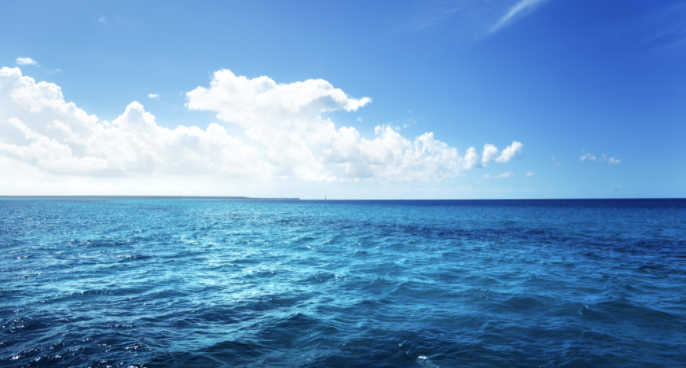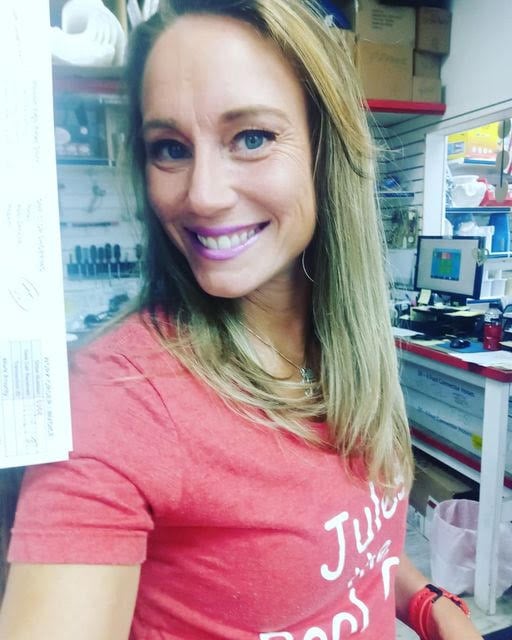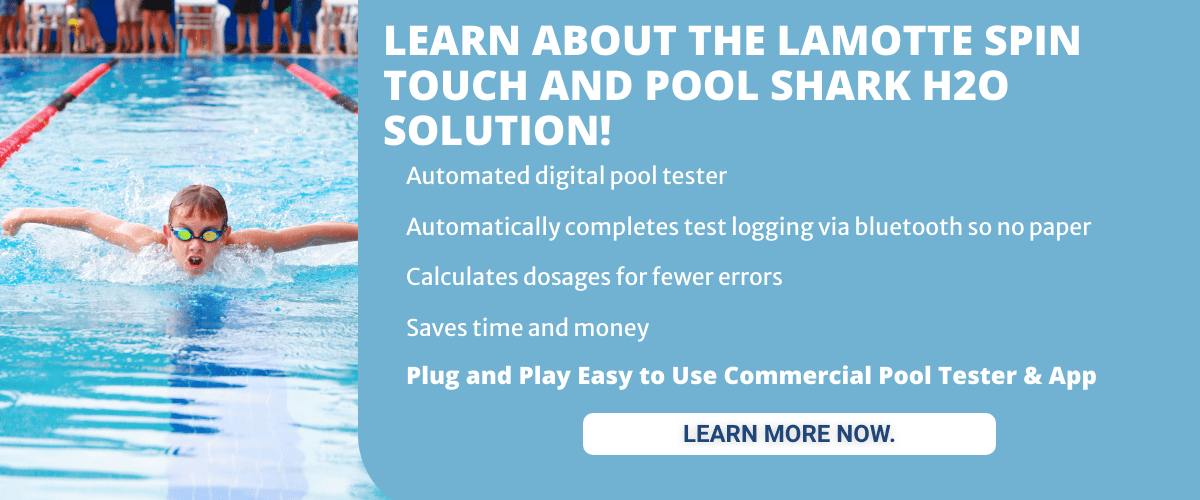
Isn’t it the absolute worst to come to check on your pool and you can’t see the bottom due to cloudiness? Not only is this illegal for safety reasons (the main drain MUST be visible), but it means something isn’t right with the water. It also makes the pool unappealing to clients and guests. There are many reasons this could occur. Let’s talk about a few.
Low/No Sanitizer
Whether you have a chemical feeder or a salt system or chlorinate manually, there may come a time when your pool ends up with low or no sanitizer. This can be caused by malfunctioning equipment. It could be caused by excess heat or a heavy bather load. Or you have contaminants in the water, both organic and inorganic, that are eating up your chlorine/bromine. Regardlessly, testing the water will give you your sanitizer levels. You will want to check for free chlorine and total chlorine. The difference, if any, between these numbers is known as chloramines. After your test, your results will be logged into your Pool Shark H20 App and necessary dosing instructions will be displayed.
Unbalanced PH/Alkalinity
Low alkalinity can cause cloudy water. I have seen the same thing with pools with a high PH. Keeping the levels within the recommended range is advised. Not only to make the sanitizer most efficient but to keep the water crystal clear. Once again, test the water regularly to determine whether or not you are in range. The Pool Shark H20 will help you adjust to keep your Langelier Saturation index as close to neutral as possible.
Dead Algae
After an algae bloom gets treated the dead algae particles can be too small for the filter to pick them up. You will need to use a clarifier that either eats them away or clumps them into larger pieces that you can then vacuum up. Ideally, you want to avoid algae blooms altogether. They can get expensive! You may have to spend hundreds of dollars on chemicals or hire someone to come to do an algae treatment. You may have to drain the pool. If there is residual staining on the surface of the pool, a pricy acid wash may be necessary. Now we are talking big bucks for sure! Help prevent algae by testing the water as frequently as possible. Your results can be kept in your pool log on your Pool Shark H20 App and you can follow the dosing instructions given to maintain algae-free water.
Diatomaceous Earth Blow Back
You may go to service your property’s pool one day and see fine dust either around the main drain, indicating a suction leak, or throughout the pool, indicating a problem with the filter. Filter grids can develop rips, holes, tears, and even collapse. This can be caused by the age of the filter grids or, the pressure got too high and caused the damage. Make sure to check your filter pressure regularly. When it is 8-10 psi above your clean starting pressure it is time for a filter clean. When performing the filter clean, inspect the grids carefully to look for any rips or tears. Don’t forget to replace the standpipe o-ring regularly!
Chemical Additions
Sometimes when we add certain chemicals such as Trichlor or Cal Hypo you may see some temporary clouding. If adding Cal Hypo to a pool with high calcium, the clouding is worse. Keep an eye on all levels, including calcium regularly. Your results and directions will be displayed on your Pool Shark H20 App.
Adding certain chemicals at the same time or within a certain time period can also cause clouding. For example, adding sodium bicarbonate and Cyanuric acid within a 24 hour period can definitely cause cloudiness. Make sure you always follow the directions on your chemicals and utilize your SDS sheets. Some chemicals can be dangerous, or even deadly if added together.
Suspended Particles
Sometimes the debris in the pool is just too small for your filter to filter out. Especially if you have a cartridge filter that has the poorest micron capturing capabilities. After testing the water, view the results on your Pool Shark H20 App and determine it is not chemical-related, a good clarifier should do the trick.
As you can see, a majority of problems that can cause cloudy water are chemistry-related. Frequent testing and reviewing results on the Pool Shark H20 App will be your best friend in maintaining a clean pool for your property. See you poolside!
More Commercial Pool Chemistry Resources
Free, vs Combined vs Total Chlorine - A Guide for Commercial or Public Pool Operators
Chlorine Shock vs Non-Chlorine Swimming Pool Shock
Why Being Able to Calculate the Volume of a Commercial or Public Swimming Pool is Important
Cyanuric Acid Levels in Swimming Pools
Ideal Alkalinity in Commercial Pools
Managing pH and Alkalinity in Pools
Commercial Pool Chlorine Management
Cyanuric Acid in Your Pool Too High? How to Remove Cyanuric Acid (Lower Pool Stabilizer)
Lowering Alkalinity in Swimming Pools
Muriatic Acid in Swimming Pools
How to Lower pH in Pools, Water Parks and Water Features
Does Chlorine Kill Poop in a Swimming Pool?
Total Dissolved Solids: When Should I Drain My Pool?
Why Pool Chemical Storage Cabinets are Important for Commercial Pools
Storing Pool Chemicals: What Commercial Pool Operators Need to Know



